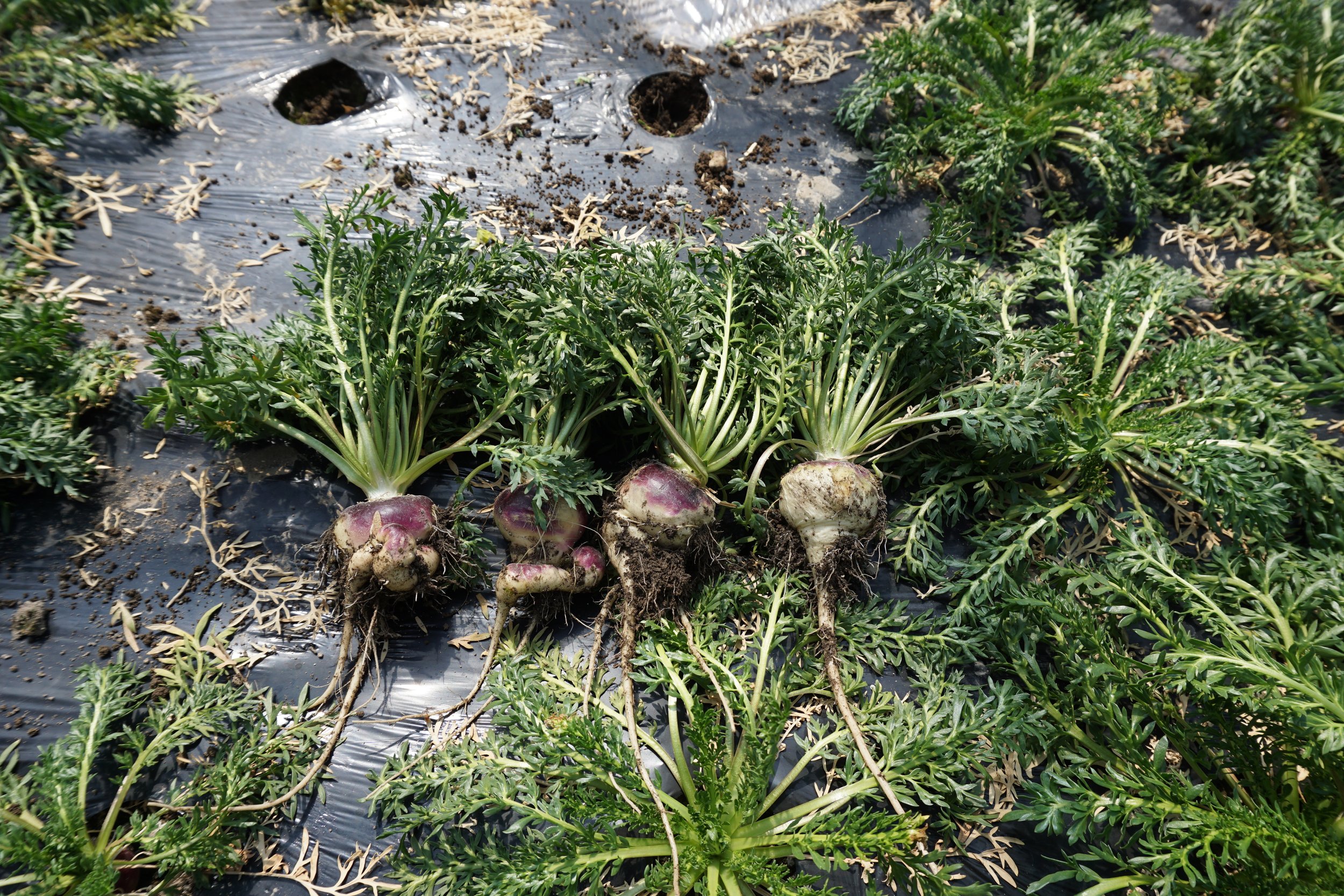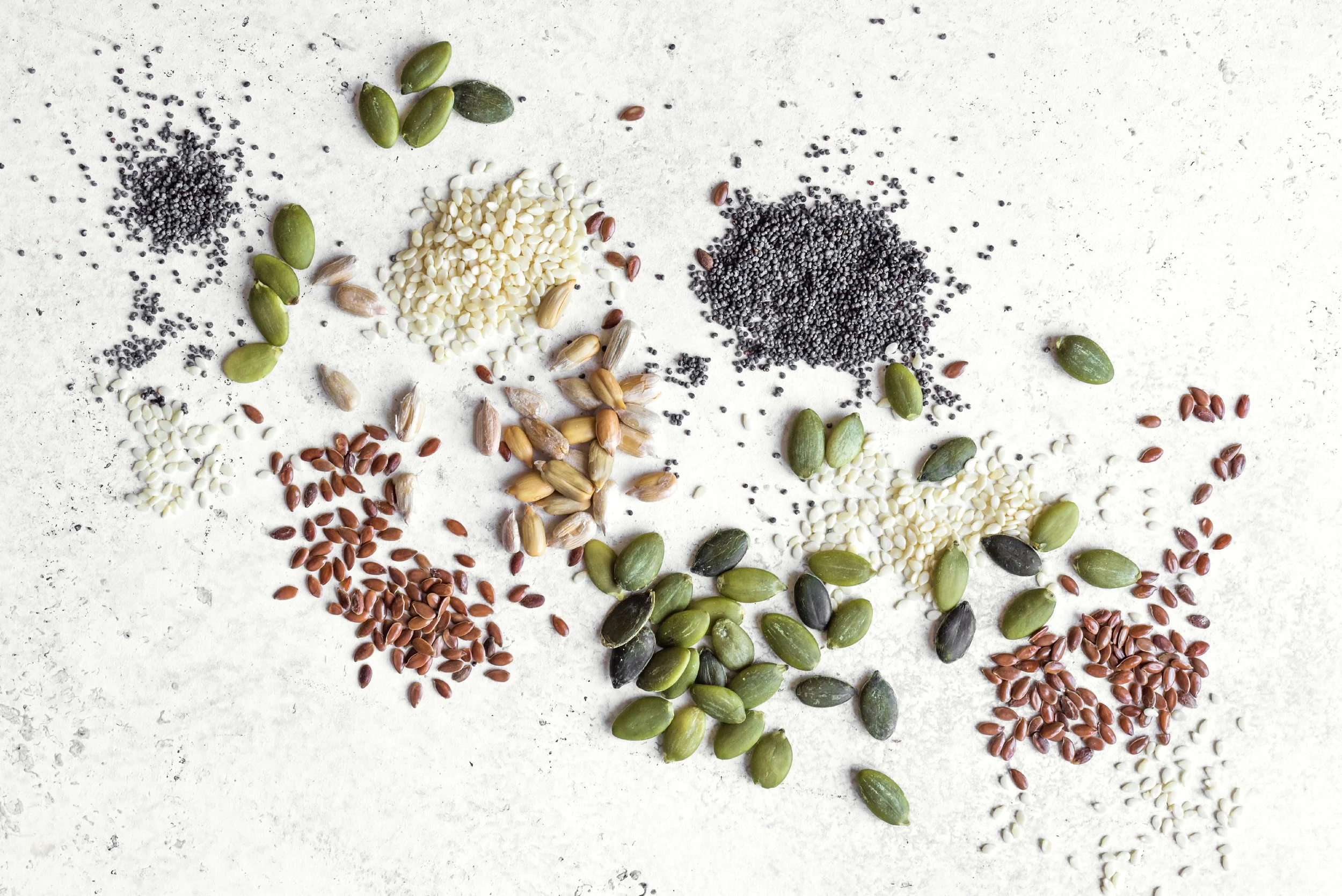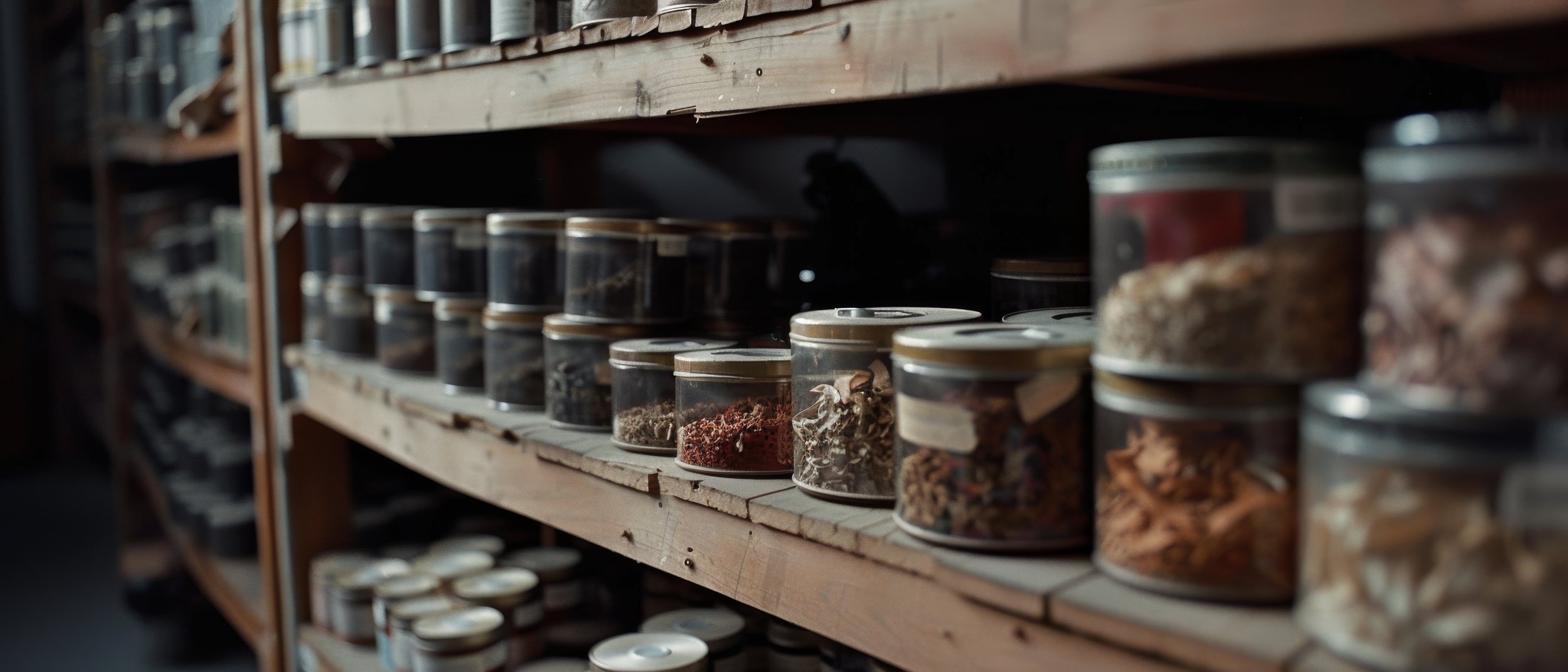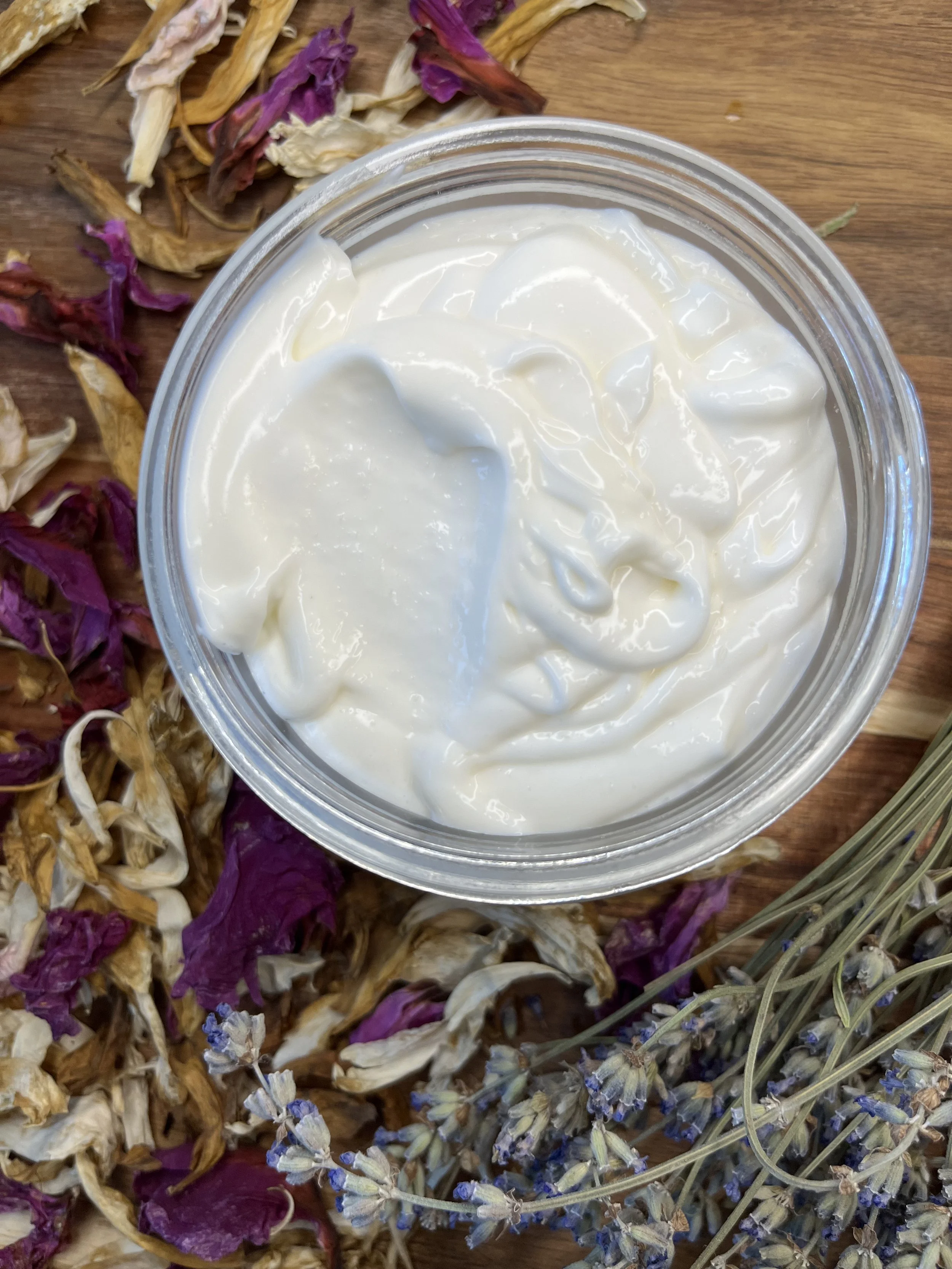6 Herbal Allies for Female Reproductive Health
Whether you're seeking to balance your menstrual cycles, ease discomfort, enhance fertility, or support overall hormonal well-being, nature offers a treasure trove of powerful herbs. In this blog post, we’ll explore six incredible herbal allies known for their potential to nurture female reproductive health. Drawing on centuries of traditional wisdom, these herbal remedies have been used historically to help harmonize the body’s natural rhythms. Embrace these natural allies in your routine and experience the benefits of a well-tuned reproductive system.
Chasteberry, Vitex agnus-castus
Hormonal Balance and PMS Relief
Balancing, cycle regulating, anti-inflammatory, dopamine modulator
Many women turn to natural remedies to support reproductive health, and one of the most celebrated is Vitex agnus-castus, commonly known as chaste tree or chasteberry. Revered for centuries, Vitex is widely used to promote hormonal balance, regulate menstrual cycles, and ease premenstrual symptoms like mood changes, breast tenderness, and bloating.
A key factor in many menstrual and reproductive concerns is prolactin, a hormone that influences menstruation and lactation. Elevated prolactin levels can contribute to PMS discomfort, breast pain, and fertility challenges by suppressing progesterone production. Chasteberry interacts with dopamine receptors, which helps lower prolactin and may alleviate symptoms naturally.
Vitex contains bioactive compounds—such as essential oils, flavonoids, and iridoids—which play a role in hormone regulation. Native to Europe and Asia, chasteberry is the fruit of the chaste tree, a deciduous shrub in the Lamiaceae family. Its small berries are packed with active ingredients that may help modulate dopamine levels and support hormonal equilibrium.
Herbal practitioners frequently recommend chasteberry for women experiencing irregular cycles, PMS symptoms, or mild hormonal fluctuations. Scientific studies reinforce its benefits—major trials found Vitex to be more effective than a placebo in alleviating PMS symptoms, particularly mood swings, bloating, and breast tenderness. One study suggested a soy-based placebo might reduce jitteriness more effectively, though overall results favor Vitex as a natural solution.
Chasteberry is available in tinctures, capsules, and teas, making it easy to integrate into a daily wellness regimen focused on hormonal balance and reproductive health. Whether used for PMS relief, fertility support, or menopausal symptoms, this herbal powerhouse remains a go-to choice for women seeking natural hormonal harmony.
Dong Quai (Angelica Root), Angelica sinensis
Blood Harmonizer, Menstrual Regulator, Menopause Support
Circulation booster, uterine relaxant, anti-cramp, restorative
Dong Quai (Angelica sinensis) has been revered in Traditional Chinese Medicine for centuries, earning its reputation as the “female ginseng” due to its powerful ability to support menstrual regularity, enhance blood flow, and promote hormonal balance. This nutrient-rich herb contains polysaccharides (APS), coumarins, and ferulic acid, which contribute to its wide range of health benefits—from easing menstrual cramps to supporting immune function and even offering anti-tumor properties.
A member of the celery family, Dong Quai thrives in high-altitude regions of Asia, preferring moist soil and indirect light. It features thin purplish stems, delicate compound leaves, and a deeply rooted yellow-brown root, which holds the highest concentration of bioactive compounds.
The polysaccharides in Dong Quai are packed with essential sugars like glucose, mannose, and galactose, contributing to its ability to boost immunity, enhance circulation, and alleviate menstrual discomfort. Additionally, the coumarins and ferulic acid in Dong Quai act as natural blood thinners, helping to ease period-related discomfort and support uterine health.
Dong Quai is a key ingredient in herbal formulations designed to relieve PMS symptoms, balance hormones, and support postpartum recovery. It is commonly blended with other medicinal herbs to enhance its effectiveness in regulating menstrual cycles and reducing cramping, bloating, and fatigue.
However, Dong Quai should be used with caution. It is not recommended for pregnant or breastfeeding individuals, and those with bleeding disorders, certain cancers, or upcoming surgeries should avoid it due to its blood-thinning effects.
Black Cohosh, Actaea racemosa, Cimicifuga racemosa
Menopausal Support and Uterine Tonic
Estrogenic effects, anti-inflammatory, hot flash reducer, soothing dysmenorrhea (period pain)
Black Cohosh (Actaea racemosa) is a powerhouse herb renowned for its ability to ease menopausal symptoms and support hormonal balance. Celebrated for its estrogen-like effects, this native North American plant has been used for centuries to reduce hot flashes, night sweats, mood swings, and menstrual discomfort.
A member of the buttercup family, Black Cohosh thrives in Canada and the Eastern United States, growing up to one meter in height with straight stems, serrated leaves, and delicate white flowers. The true medicinal power lies in its black rhizome and deep brown roots, which are carefully harvested and dried for herbal use.
Because of its popularity, Black Cohosh is sometimes confused with yellow cohosh and white cohosh, which can lead to adulteration. Here’s how to distinguish them:
Yellow Cohosh: Features yellow flowers, setting it apart visually.
White Cohosh vs. Black Cohosh: Both have white flowers, but their fruit differs—Black Cohosh produces a thick follicle, while White Cohosh bears white berries.
The root extract of Black Cohosh is rich in triterpene glycosides and other powerful phytochemicals, known for their uterine-relaxing and hormone-balancing effects. Whether in the form of tea, tinctures, or concentrated extracts, this herbal remedy remains a trusted ally for women navigating hormonal shifts—helping to ease PMS, perimenopause, and menopause symptoms naturally.
Red Raspberry Leaf, Rubus idaeus
Uterine Strengthener and Tonic
Tissue rejuvenator, natural muscle relaxant, antioxidant, restorative, labor and postpartum support
Red Raspberry Leaf (Rubus idaeus) has long been revered as a powerful uterine tonic, helping to tone and strengthen reproductive muscles while supporting hormonal balance. This gentle yet effective herb is traditionally used to ease menstrual discomfort, prepare the body for childbirth, and promote postnatal recovery.
This fast-growing shrub features thorny stems, serrated broad leaves, and bright red berries—though it’s the nutrient-rich leaves that hold the most medicinal value. Packed with vitamins, antioxidants, and active compounds, Red Raspberry Leaf is commonly steeped into a soothing tea to support uterine health and enhance circulation.
Red Raspberry Leaf contains bioactive compounds that stimulate and relax smooth muscle, depending on factors like herbal preparation, extraction method, and pregnancy status. While its effects may vary by geographical region, studies suggest normal herbal use is safe, with toxic reactions only observed in high-dose animal injections.
Used throughout menstrual cycles, pregnancy, and postpartum recovery, Red Raspberry Leaf helps align the body’s natural rhythms, promoting uterine nourishment, circulation, and overall reproductive balance. Whether in tea, tincture, or supplement form, this ancient botanical remedy remains a trusted ally for women’s health.
Ashwagandha, Withania somnifera
Adaptogenic Hormonal Support
Stress modulator (adaptogenic), endocrine balancer, rejuvenating, nerve-calming
Ashwagandha (Withania somnifera) is a renowned adaptogen in Ayurvedic medicine, celebrated for its ability to support hormonal balance, reduce stress, and enhance reproductive vitality. This ancient herb works by modulating cortisol levels, promoting relaxation, and nourishing the adrenal glands, helping the body adapt to both internal and external stressors.
The medicinal power of Ashwagandha comes from its roots, which contain withanolides and alkaloids—bioactive compounds known for their ability to balance hormones and support overall well-being. By influencing stress response, this herb can boost energy levels, improve resilience, and promote reproductive health.
Ashwagandha is native to India, North Africa, and the Middle East. A member of the nightshade family, this evergreen shrub features a central stem with elliptical leaves, small bell-shaped flowers, and bright red berries. However, its thick, creamy-white root is where the true medicinal properties lie.
This powerful adaptogen is available in powder, capsule, and tea forms, offering a holistic approach to hormonal health. While beneficial for short-term ailments, experts recommend limiting continuous use to 8 weeks, followed by a break of several months before resuming. Ashwagandha should be avoided during pregnancy and breastfeeding due to its potential hormonal effects. Always consult a healthcare provider before use, especially if combining it with other medications or treatments.
Maca, Lepidium meyenii
Energy and Fertility Booster
Endocrine support, libido enhancer, nutritional tonic, adaptogenic
Hailing from the high-altitude Andes of Peru, Maca (Lepidium meyenii) has been revered for centuries as a natural energizer and fertility booster. This nutrient-dense root supports hormonal balance, enhances libido, and provides vital nourishment to the endocrine system. Traditionally, Maca was boiled, dried, or used in local delicacies like puddings and jams. While early Andean cultures recommended it for fertility and vitality, its primary historical use was for energy and endurance rather than as an aphrodisiac.
Maca belongs to the Brassicaceae family, sharing structural similarities with turnips, featuring a thick taproot and small bushy leaves that grow close to the ground. Thriving in harsh mountain climates, this herbaceous plant has adapted to extreme conditions, making it a resilient powerhouse for human health.
Maca is a potent adaptogen, meaning it helps the body naturally regulate stress hormones, supporting menstrual health, fertility, and menopause relief. Its active compounds may boost estradiol levels, lower cortisol, and enhance overall well-being, making it an essential ally for stress resilience and reproductive balance.
Whether taken as a powdered supplement in smoothies, capsules, or tinctures, Maca synergizes with other herbal allies to support vitality and reproductive health. No known health concerns exist when using raw Maca or alcohol-based tinctures, making it a powerful addition to any herbalist’s apothecary.
These six herbal allies—Vitex, Dong Quai, Black Cohosh, Red Raspberry Leaf, Ashwagandha, and Maca—offer time-tested support for female reproductive health. Each herb contributes uniquely to hormonal balance, menstrual regulation, and overall vitality, working in concert with the body to promote natural wellness. As always, when integrating herbal remedies into your regimen, it’s wise to consult with a healthcare professional to ensure they align with your personal health needs.
References
Van Die, M Diana et al. “Vitex agnus-castus extracts for female reproductive disorders: a systematic review of clinical trials.” Planta medica vol. 79,7 (2013): 562-75. doi:10.1055/s-0032-1327831
Zeng, Pengjiao, et al. "The Structures and Biological Functions of Polysaccharides from Traditional Chinese Herbs." Progress in Molecular Biology and Translational Science, edited by Lijuan Zhang, vol. 163, Academic Press, 2019, pp. 423-444. ScienceDirect, https://doi.org/10.1016/bs.pmbts.2019.03.003
Etheridge, Jennifer. "Dong Quai: Uses, Dosage, and Side Effects." Medical News Today, 2025, https://www.medicalnewstoday.com/articles/dong-quai
Chao, Wen-Wan, and Bi-Fong Lin. “Bioactivities of major constituents isolated from Angelica sinensis (Danggui).” Chinese medicine vol. 6 29. 19 Aug. 2011, doi:10.1186/1749-8546-6-29
Salari, Sofia et al. “Ethnobotany, Phytochemistry, Traditional and Modern Uses of Actaea racemosa L. (Black cohosh): A Review.” Advances in experimental medicine and biology vol. 1308 (2021): 403-449. doi:10.1007/978-3-030-64872-5_24
Bowman, Rebekah et al. “Biophysical effects, safety and efficacy of raspberry leaf use in pregnancy: a systematic integrative review.” BMC complementary medicine and therapies vol. 21,1 56. 9 Feb. 2021, doi:10.1186/s12906-021-03230-4
Mikulska, Paulina et al. “Ashwagandha (Withania somnifera)-Current Research on the Health-Promoting Activities: A Narrative Review.” Pharmaceutics vol. 15,4 1057. 24 Mar. 2023, doi:10.3390/pharmaceutics15041057
Ulloa Del Carpio, Norka et al. “Exploring the chemical and pharmacological variability of Lepidium meyenii: a comprehensive review of the effects of maca.” Frontiers in pharmacology vol. 15 1360422. 19 Feb. 2024, doi:10.3389/fphar.2024.1360422
Bower-Cargill, Cherie, et al. "A Systematic Review of the Versatile Effects of the Peruvian Maca Root (Lepidium meyenii) on Sexual Dysfunction, Menopausal Symptoms, and Related Conditions." Phytomedicine Plus, vol. 2, 2022, https://doi.org/10.1016/j.phyplu.2022.100326.






















Hello and welcome! I'm Eve, a Chemist turned Herbalist, sharing the wonders of plant medicine and botanical skincare. Join me on this journey to Learn, Create, and Align your Divine!